Variations on the two-level signalized intersection
on the four-point intersection |
The following are variations on the two-level intersection on the four-point intersection.
The following material is presented to help understanding of the two-level signalized intersection presented in the main menu of this homepage.
There are a total of 12 possible direction of travel in a four-point intersection (excluding U-turns)
Because there are left turn, straight through and right turn from each of the four incoming traffic. In other words, there are four possible left turns, four straight through and four right turns for a total of 12 possible directions. |
|
| |
| (1) |
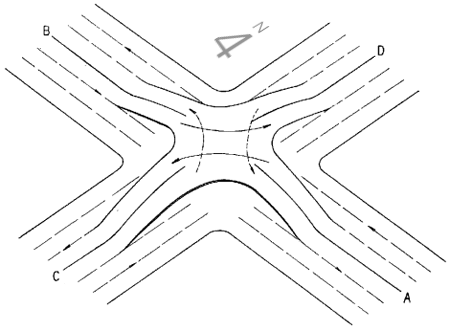 |
| Left turns are handled by the upper level, and the lower level handles straight through traffic and right turns in a Two-Level Signalized section.
In other words, the upper level handles traffic to 4 directions (left turns), while the lower level handles 8 directions (straight through and right turns).
Signals on the upper level are for simultaneous left turns, and signals on the lower level are for simultaneous straight through.
It is not possible to use simultaneous left turn and straight through signals.
|
| |
|
| |
| (2) |
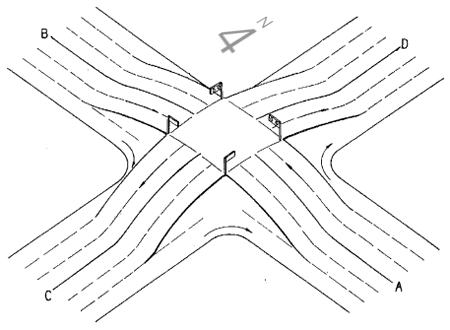 |
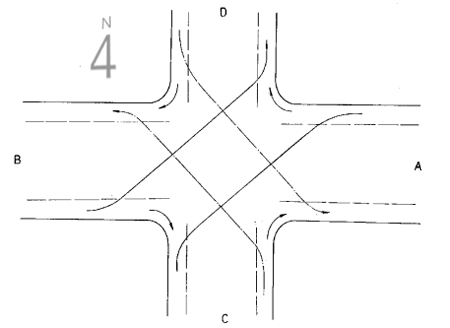 |
The upper level handles the straight through traffic, and left turns and right turns are handled in the lower level.
Rest is the same as (1). |
| |
|
| |
| (3) |
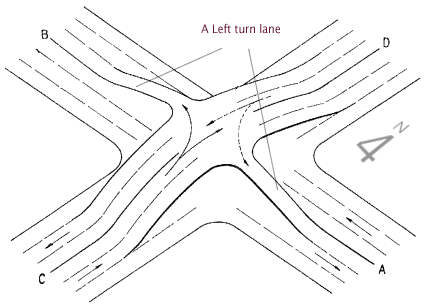 |
The upper level handles the straight through and left turn traffic incoming from C-D directions, while the lower level handles all traffic coming from the east-west direction and right turns from C-D.
This would be similar to adding a left turn lane to allow left turns from the overpass of the Sadang Intersection in Seoul, Korea.
Altering the structure to allow right turns coming from C-D direction to make turns on the upper level would make the structure into Two-Level Signalized Unterchange introduced in the main menu of this homepage. |
| |
|
| |
| (4) |
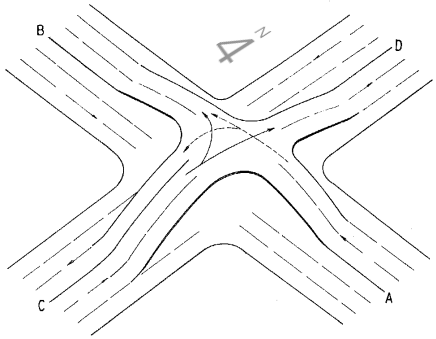 |
Straight through traffic and left turns coming from the south and east are handled on the upper level, while the lower level handles all incoming traffic from north and west and traffic turning right from south and east.
The system allows straight through and left turn signals for simultaneous signals for straight through and left turns. |
| |
|
| |
| (5) |
 |
| The upper level handles the straight through and left turns coming from south and west, while the lower level handles all traffic coming from north and east as well as right turns coming from south and west. Rest of the structure is the same as (4) |
| |
|
| |
Concepts of the Two-Level Signalized Intersection can be applied to a five-point intersection. Details can be found in “Application of TLSI in five-point intersection.”
– Go Directly To -
|
| |

